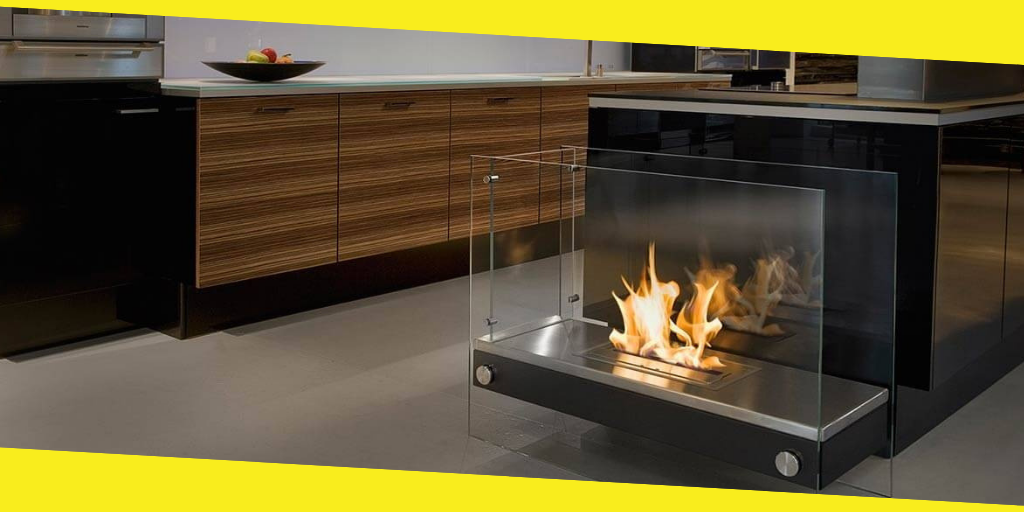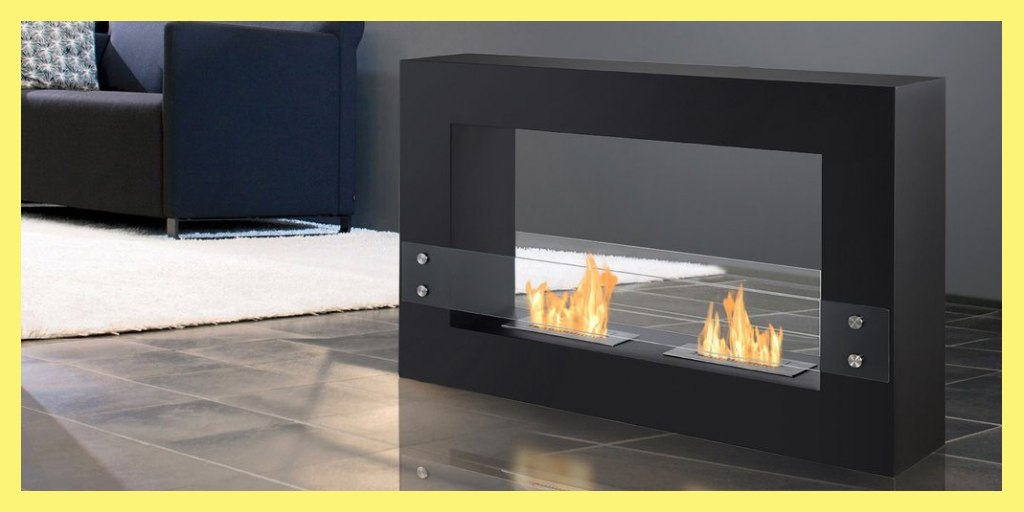Common Misconceptions About Bioethanol Fireplaces
This post was last updated on August 30th, 2021

There is a lot of misinformation out there about bioethanol fireplaces. Today, we will examine some of the advantages offered by these fireplaces and will also address some of the most common misconceptions that people have about them.
Contents
ToggleThe Advantages Of Bioethanol Fireplaces
Before getting too involved in examining bio ethanol fireplaces, we should start by identifying exactly what bioethanol is. Standard ethanol comes from fossil fuels like natural gas and oil. Bioethanol, on the other hand, is derived from organic products like sugarcane, grapes, and sugar beets. The process of creating bioethanol involves allowing plant-based matter to ferment. The resulting fuel, which is used for everything from producing food to manufacturing products, contains approximately 96.5% alcohol. Today, it is commonly used in place of other types of fuel like petrol or diesel.
Common Uses Of Bioethanol Fuel
One thing that makes bioethanol unique when compared to other types of fuel is that it is clean burning. That means that it can be burned indoors without the need for a chimney since it doesn’t give off smoke or toxic fumes. The fuel itself burns away completely, meaning that there are no traces of residue left behind. A great example of this can be seen in Johannesburg. The buses in the city run on bioethanol fuel, which means that their exhaust is actually cleaner than the surrounding air.
Thanks to the clean-burning nature of the fuel, Soothing Company and other companies have been able to create innovative products that can be safely used indoors. By eliminating the need for gas lines or chimneys, bioethanol has revolutionized the way that manufacturers, architects, and interior designers approach creating products or designing interior spaces.
The complexity of bioethanol fireplaces can vary quite a bit, from simple burners that you can use as a part of your own fireplace design to extravagant wall-mounted or suspended fireplaces. Without the need for a chimney, the design options are practically unlimited. As an added bonus, they don’t give off harmful emissions, meaning that they are safe for the environment. Bioethanol fuel is considered to be carbon neutral, which is in sharp contrast to fireplaces that burn wood or use natural gas.
One of the biggest misconceptions that people have about bioethanol fuel is that it doesn’t give off a lot of heat. This is a myth. In fact, there are bioethanol fireplaces on the market that give off more heat than similar fireplaces that use wood or gas. Just like gas and wood fireplaces, some bioethanol fireplaces are designed to give off more heat than others. When comparing your options, make sure that you take into account the heat output of the fireplace.
You should also think about the way that you live your life when deciding which type of fireplace is the right choice for your home.
If you are planning on using your fireplace as a primary heating source that will burn for extremely long periods of time, going with a closed-combustion wood burning fireplace rather than a bioethanol fireplace is probably the best option. These fireplaces cost a lot less to operate when they are used for long stretches of time. The only downside is that they have to be permanently installed, which can be quite costly. They are also more expensive and challenging to maintain. Additionally, it can take a while for the heat from the fireplace to be felt throughout the space.
On the other hand, bioethanol fireplaces are ideal for people who have small homes or apartments. They are perfect for urban settings where putting in a fireplace that burns wood may not be practical. Renters can also benefit from these fireplaces since they don’t require any modifications to the structure of the space. That means that people who are renting can still enjoy the beauty and warmth of a fireplace even if there is not already one installed in the apartment.
After figuring out which fuel source you want to use, you then need to consider the size of the space where the fireplace will be located. In most cases, you won’t have any trouble finding a fireplace that is sized appropriately for the space, regardless of which type of fuel you choose.

Fireplaces are rated based on the amount of heat that they put out, which is measured in kilowatts per hour (KW/h). You can use a simple calculation to figure out the heat output that you need out of your fireplace. All that you have to do is calculate the volume of the space that you want to heat. Then, divide that area by 30. The resulting number is the approximate fireplace heat output that you require. For instance, if the room that you want to heat is 180 cubic meters, you will need a 6KW fireplace. Keep in mind that this is only an estimate. Rooms that have a lot of windows or that have high ceilings may require more powerful fireplaces.
The most important thing to understand is that bioethanol fireplaces are more than capable of generating heat. People who say otherwise have most likely not chosen a fireplace with a high enough heat output. If you try to use a small bioethanol fireplace in a large room, it obviously won’t be able to heat the space. This is most likely where the myth that bioethanol fireplaces aren’t good at heating originated.
There are countless advantages associated with using bioethanol as fuel for a fireplace. If you are getting ready to buy a fireplace for your home, you should definitely consider it as an option. Not only can this fuel function as a viable heat source but it also is an eco-friendly option, making it a great choice for any home.
Recommended For You
How Calendar Spread Works?
Most Inside
Most Inside offers high-quality recommendations and valuable updates to enhance all aspects of your life, providing premium guidance and enriching experiences.




